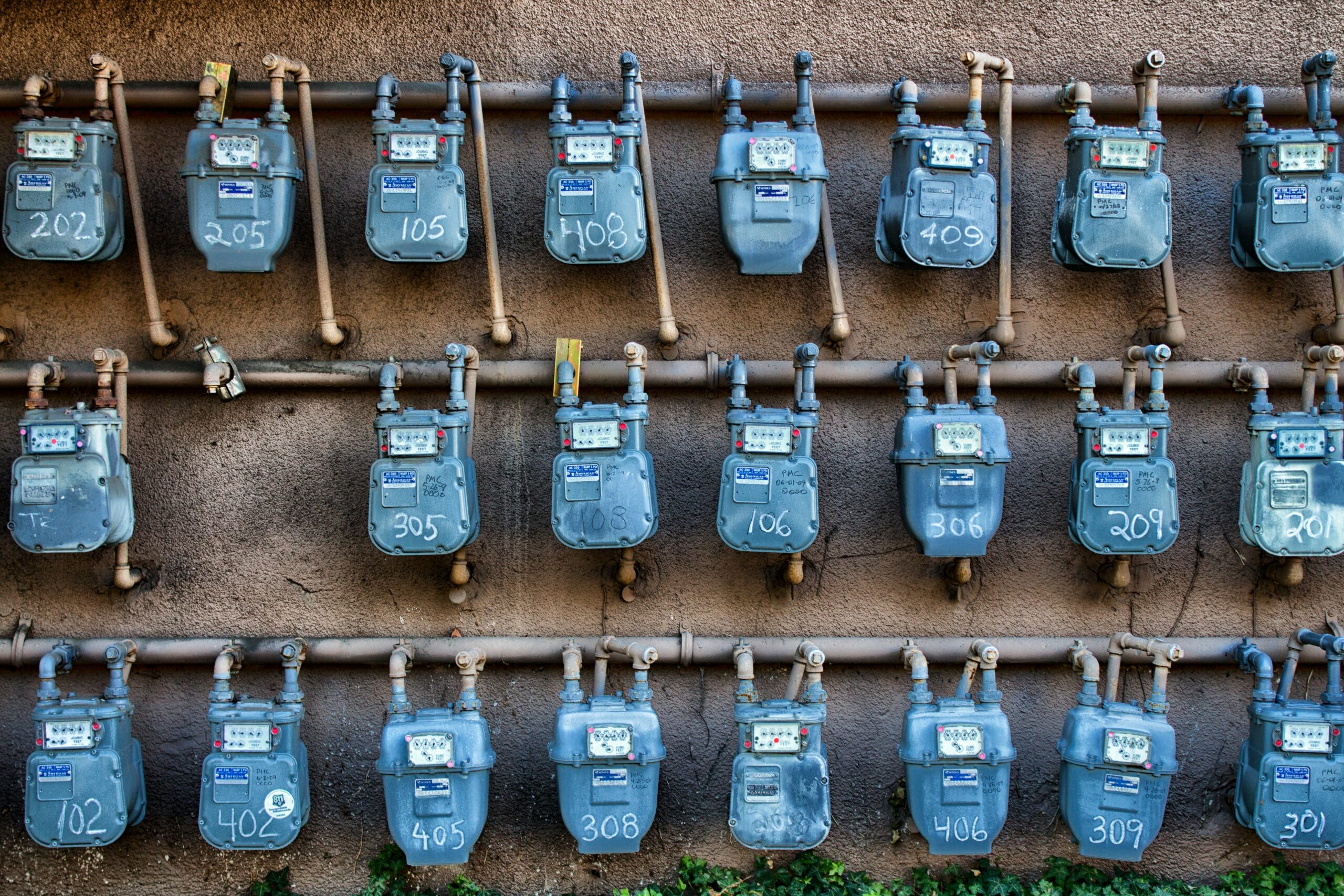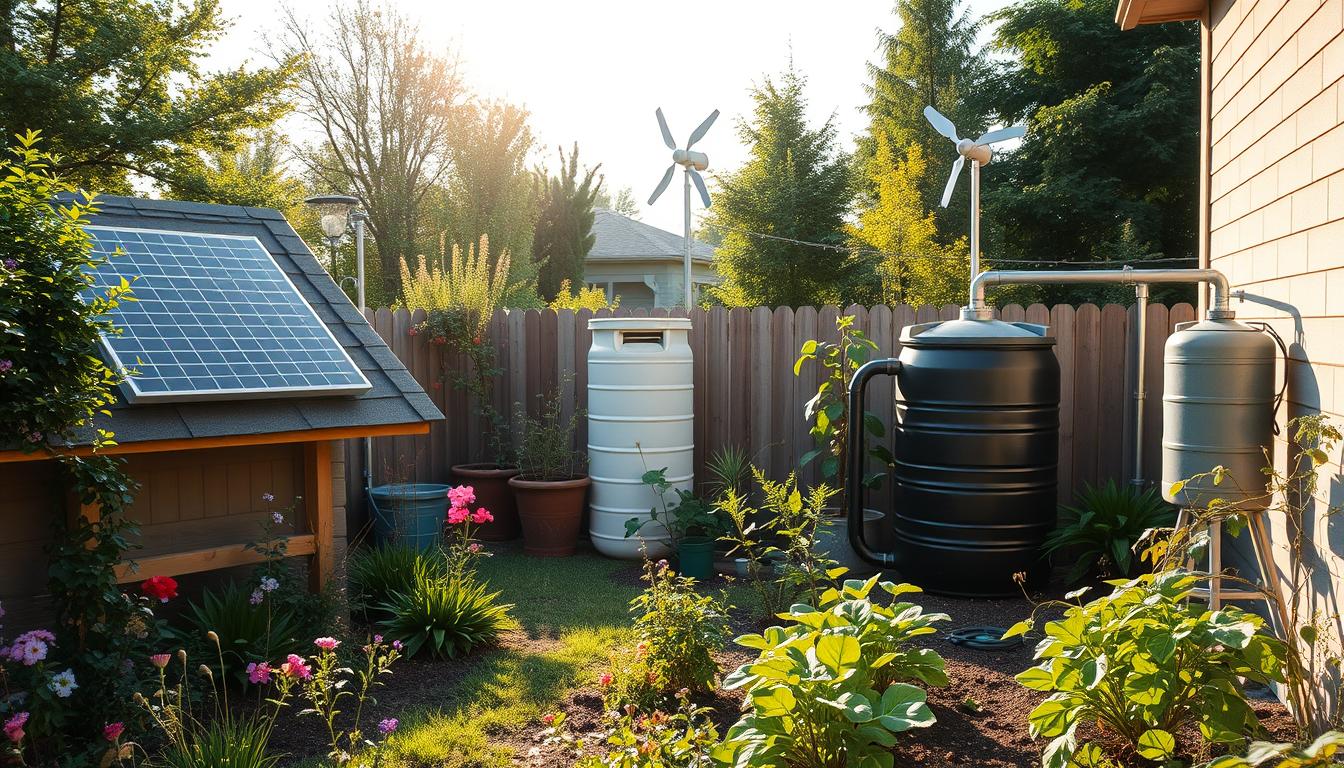Looking for ways to cut down on energy costs? You might be surprised to know that heating and cooling use about 50% of a home’s electricity. DIY solar generators can help you save money and reduce your need for the grid. Building your own power source is becoming more popular and can be a smart move to lower energy costs.
Imagine powering your home with a clean, reliable energy source and saving on utility bills. DIY generators make this possible. By learning how they work, you can decide if making your own power is right for you. Saving on electricity bills, reducing energy costs, or lowering utility expenses are all good reasons to consider DIY generators.
Key Takeaways
- You can save money on electricity bills by using DIY solar generators
- Heating and cooling account for around 50% of electricity usage in a home
- DIY generators can help reduce energy costs and lower utility expenses
- Building your own power source can be a smart and cost-effective solution
- Energy independence is a rising trend that can benefit homeowners and businesses
- DIY generators can provide a clean and reliable source of energy
- Understanding how DIY generators work can help you make an informed decision
Understanding DIY Generators and Their Cost Benefits
Looking for ways to lower your electric bills? Start by checking out energy-saving tips and efficient appliances. DIY generators are a great, yet often overlooked, option. They can cut down on energy costs over time. The cost to set up a DIY generator varies from $250 to $1650, based on the system’s quality and components.
There are many types of DIY generators, like solar and wind ones. These systems include solar panels, charge controllers, batteries, and inverters. Knowing about these options helps you choose the best one for your energy needs.
Types of DIY Generators Available
Here are some popular DIY generator types:
- Solar generators: These use solar panels to make electricity, perfect for sunny areas.
- Wind generators: These use wind turbines to generate electricity, ideal for places with steady winds.
Initial Investment vs. Long-term Savings
The upfront cost of a DIY generator might seem high. But, the long-term savings on energy bills are worth it. Using a DIY generator with energy-saving tips and appliances can greatly reduce your electric bills and grid reliance.
| Generator Type | Initial Investment | Long-term Savings |
|---|---|---|
| Solar Generator | $250-$1650 | 10-20% reduction in energy costs |
| Wind Generator | $500-$2000 | 15-30% reduction in energy costs |
By looking into DIY generators and using energy-saving tips, you can make a big difference. This approach can help lower your energy costs and reduce your need for the grid.
Essential Tools and Materials for Building Your Generator
To make a DIY generator, you’ll need solar panels, charge controllers, batteries, inverters, wires, and more. These parts work together to offer smart energy solutions and cut down your electricity bill savings. Pick high-quality, compatible parts for a better generator.
Choosing the right materials is key for a good generator. For instance, solar panels can meet 20 to 45% of your home’s power needs. You might also think about wind turbines or ground source heat pumps for other smart energy solutions. Here’s what you’ll need to start:
- Solar panels
- Charge controllers
- Batteries
- Inverters
- Wires and connectors
- Fuses and switches
- Housing unit
With these tools and materials, you can make a DIY generator that lowers your electricity bill savings. Think about the cost and efficiency of your generator when picking parts. With the right stuff and some creativity, you can make a DIY generator for your home or business.
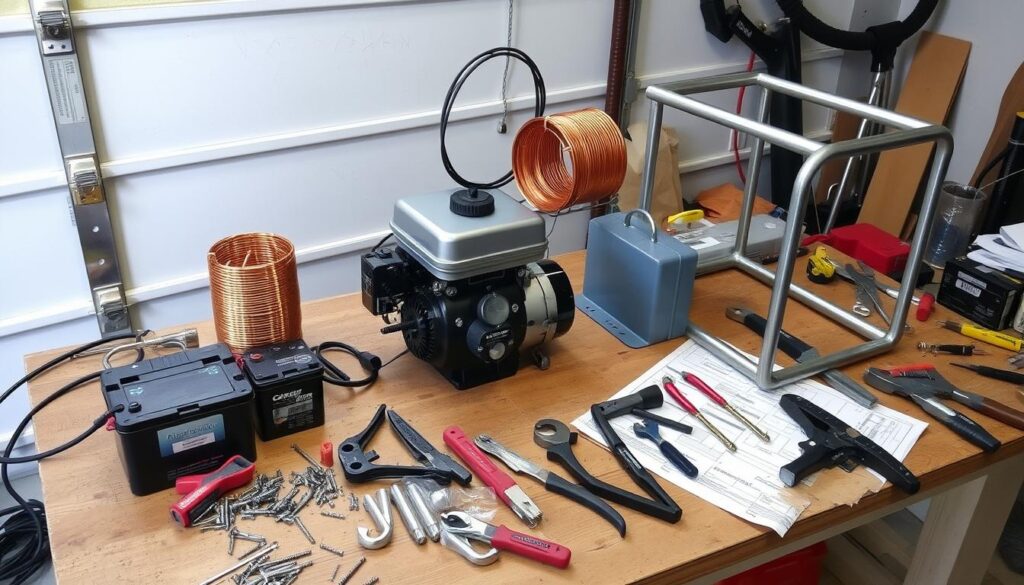
By following these tips and picking the right materials, you can make a DIY generator. It will help you save on your electricity bill savings and give you a reliable power source for your home or business.
| Component | Description | Cost |
|---|---|---|
| Solar Panels | Provide 20-45% of household electricity | Varying costs |
| Charge Controllers | Regulate energy flow from solar panels | $50-$200 |
| Batteries | Store excess energy for later use | $100-$500 |
Safety Precautions and Legal Considerations
Building and running diy generators requires top safety. You must wire correctly, ground properly, and use MC4 connectors for high voltage DC. This keeps your energy-saving efforts safe and effective. It’s key to avoid accidents and make sure your generators work well.
First, learn about and get any needed permits and rules in your area. This could be electrical, building, or environmental permits. Following these rules helps you avoid fines and keeps you safe. Also, get personal safety gear like gloves, safety glasses, and a fire extinguisher to protect yourself.
Installation Guidelines
Installing your diy generators right is very important. You must follow the maker’s instructions and be careful to avoid electrical shock or fires. Some important things to remember include:
- Make sure there’s good air flow to stop flammable gases from building up
- Keep the generator away from things that can catch fire
- Use a ground fault circuit interrupter (GFCI) to protect against electrical shock
By taking these safety steps and following the law, you can make sure your diy generators work safely and well. This helps you save on energy costs and supports energy-saving efforts.

| Safety Precaution | Importance |
|---|---|
| Proper wiring and grounding | High |
| Using MC4 connectors | High |
| Personal safety equipment | Medium |
| Proper installation | High |
How to Save Money on Electricity Bills Through Generator Usage
Using a DIY generator can help you reduce energy costs and save money on electricity bills. To save the most, align energy production with when it’s most needed. This means focusing on making power during high-demand times.
Another way to reduce energy costs is through load management. This means using power for important appliances first and turning off others during busy hours. This approach helps you save money on electricity bills and makes your generator last longer.
Some great energy conservation techniques include:
- Using energy-efficient appliances
- Turning off lights and devices when not in use
- Upgrading to Energy Star-rated appliances
By using these strategies, you can save money on electricity bills and reduce energy costs over time. Always keep an eye on your energy use and adjust as needed to cut down on bills.

| Appliance | Energy Consumption | Cost Savings |
|---|---|---|
| Refrigerator | 1-2 kWh/day | $150/year |
| Air Conditioner | up to 1450 kWh/month | up to 40% of average electric consumption |
Building Your First DIY Generator: Step-by-Step Guide
Starting your first diy generators project is exciting. It’s key to know how smart energy solutions help cut down on power bills. The average home uses about 30KWh daily. A DIY generator can really help save money on energy.
You’ll need to gather some important parts. These include solar panels, a deep cycle battery, a DC input, an inverter, and a battery box. Here’s what you might spend: a small solar panel for $100, a battery for $50-60, a battery box for $10, a DC meter for $25, and an inverter for $50.
Here’s a simple guide to get you started:
- Connect the solar panels to the charge controller for efficient energy transfer.
- Wire the batteries safely, following all precautions.
- Install the inverter to turn DC power into AC power for your home.
By following these steps and using diy generators and smart energy solutions, you can cut down your energy costs. This also helps the planet. Always be careful and ask experts if you’re not sure about anything.
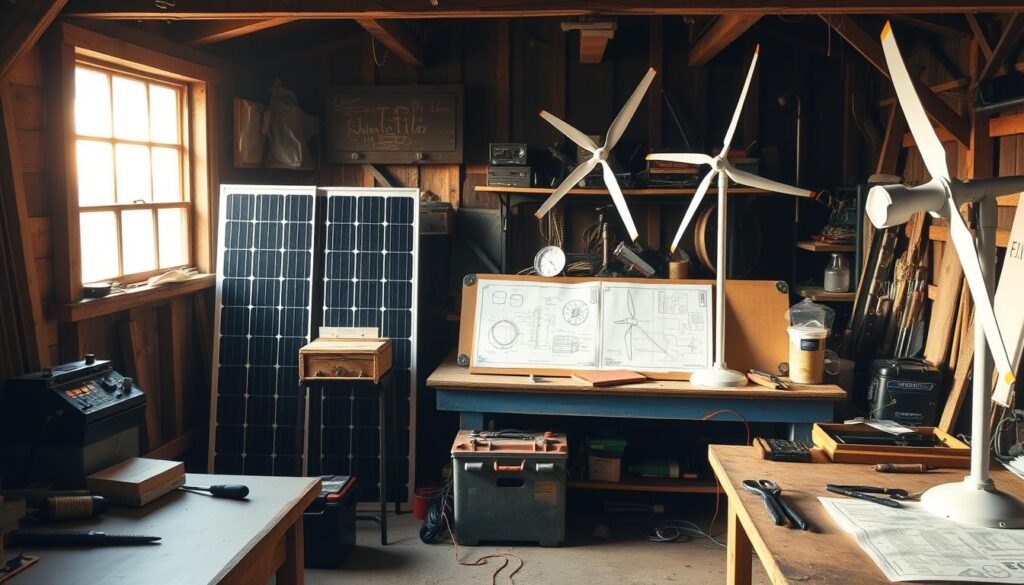
With the right tools and knowledge, you can make a reliable DIY generator. It will give you energy independence and save money. Start making your DIY generator today for a greener tomorrow.
| Component | Cost | Description |
|---|---|---|
| Solar Panel | $100 | 12-volt or better |
| Deep Cycle Battery | $50-60 | 12-volt lead-acid or gel |
| Battery Box | $10 | Protects the battery from the elements |
| DC Meter | $25 | Monitors the system’s performance |
| Inverter | $50 | Converts DC power to AC power |
Maintaining Your DIY Generator for Maximum Efficiency
To keep your DIY generator running well, regular maintenance is key. This means checking connections, cleaning solar panels, and watching your battery’s health. A routine maintenance schedule helps avoid common problems and boosts your generator’s performance. This saves you money on electricity bills and cuts down on grid use, just like using efficient appliances and saving energy.
Some important maintenance tasks include:
- Regularly inspecting and cleaning your solar panels to ensure they are operating at maximum capacity
- Checking your battery connections to prevent corrosion and wear
- Monitoring your battery health to identify any possible issues before they become major problems
By keeping up with these tasks, you can make your DIY generator last longer. It will keep providing reliable and efficient power. This is vital for homeowners and businesses wanting to lower their energy costs and grid use. With proper maintenance and energy-saving tips, you can slash your electricity bill by up to 90% and lessen your environmental impact.
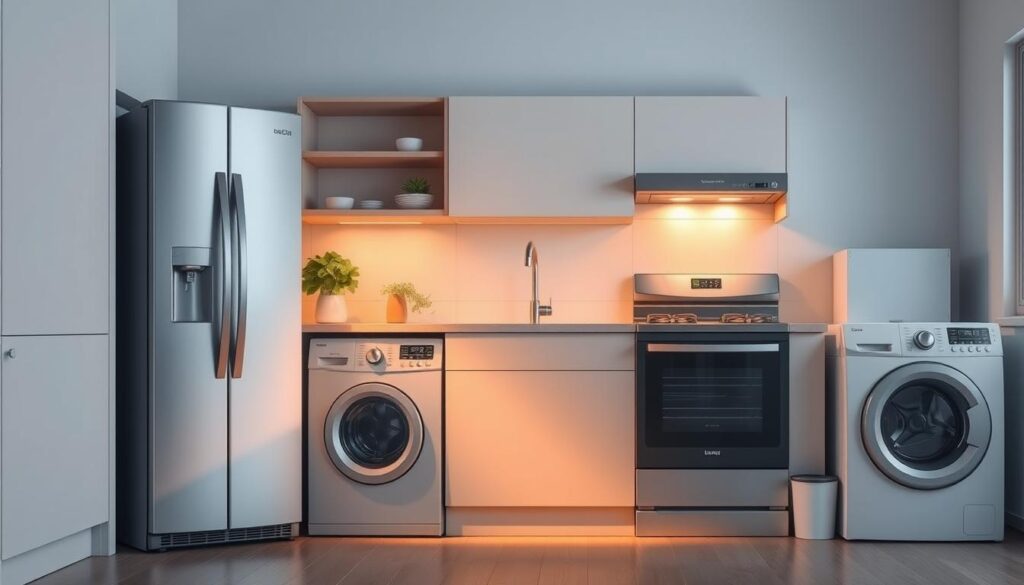
Also, think about other ways to save energy, like using energy-efficient bulbs and managing your load better. A holistic approach to energy efficiency can lead to big savings and a smaller environmental footprint. With electric bills rising by almost 8% in summer, it’s critical to manage your energy use and start saving now.
| Energy-Saving Strategy | Potential Savings |
|---|---|
| Using energy-efficient bulbs | 25-80% |
| Optimizing load management | 25% or more |
| Implementing energy-saving tips | up to 90% |
Integrating Your Generator with Existing Home Systems
Integrating your DIY generator with your home’s systems can make your home more energy-efficient. You can connect it to your home’s electrical panel or power specific circuits. This way, you create a hybrid system that uses both grid power and your generator for better energy management.
Some benefits of integrating your generator with existing home systems include:
- Reduced dependence on the grid
- Lower energy bills
- Increased energy efficiency
You can also use smart energy solutions and efficient home appliances to cut down on energy use. For instance, choose energy-saving lights and appliances. Also, install a smart thermostat to control your home’s temperature.

By integrating your generator with your home’s systems and using smart energy solutions and efficient appliances, you can make your home more energy-efficient and sustainable.
| System | Benefits |
|---|---|
| Hybrid System | Reduced dependence on the grid, lower energy bills |
| Smart Energy Solutions | Increased energy efficiency, reduced energy consumption |
| Efficient Home Appliances | Lower energy bills, reduced environmental impact |
Advanced Techniques for Energy Generation
Looking for ways to lower utility costs and cut electric bills? You might want to explore advanced energy generation techniques. Hybrid systems, which mix different renewable energy sources, offer a reliable and efficient way to power your home.
Investing in advanced storage solutions, like batteries, can also help. These solutions make sure you always have energy when you need it. Plus, smart controls can help you use energy more wisely, saving you even more money.
Some advanced energy generation techniques include:
- Combining solar and wind power to create a hybrid system
- Implementing energy storage solutions, such as batteries, to maximize energy availability
- Using smart controls to optimize energy usage and reduce waste
By using these advanced methods, you can greatly reduce your utility bills. You’ll also boost your energy independence and lower your carbon footprint.

| Technique | Benefits |
|---|---|
| Hybrid Systems | Reliable and efficient energy supply |
| Advanced Storage Solutions | Maximized energy availability and reduced reliance on the grid |
| Smart Controls | Optimized energy usage and reduced waste |
Measuring Your Success: Tracking Energy Savings
To track electricity bill savings, you need to watch your energy use. This lets you see how much you save and where you can do better. You can use simple meters or smart home systems to keep an eye on your energy.
Tracking your energy savings is important. Here are some things to think about:
- Load factor, which is the highest actual kilowatt (kW) demand compared to the maximum theoretical kilowatt hour (kWh) use
- Checking your utility bills for extra charges or rate increases
- Knowing your energy tariffs and how they affect your costs
Using energy conservation techniques and tracking your progress can cut your energy use. This means lower electricity bill savings. You can also look into solar PV or co-generation for more energy independence. Always check your energy use and change your plans to save more.

Being proactive about tracking your energy savings helps you make smart choices. This not only cuts your energy costs but also helps the planet.
| Transform Your DIY Energy Setup with Edison’s “Lost Invention” Why stop at DIY generators when you can unlock unlimited energy on demand? Edison’s “Lost Invention” is a revolutionary solution that can take your energy-saving efforts to the next level. Discover how this innovation can help you save even more while achieving true energy independence. Click here to learn more! |
Conclusion: Embracing Energy Independence and Cost Savings
Building a DIY generator is a big step towards energy freedom and saving money on bills. It lets you use renewable energy, making you less dependent on the grid. This way, you can save money and be more self-sufficient.
This guide has given you tips to save even more. By making your system work better and managing how you use power, you can save a lot. A DIY generator can cut your electricity costs by 50-75%, making it a smart choice for the long run.
Using a DIY generator also helps the planet. It reduces your carbon footprint and lessens the load on the power grid. As technology gets better and prices drop, more people will use DIY energy solutions. This will help make our energy system cleaner and more reliable.
So, start building your DIY generator today. It’s the first step towards saving money and helping the environment. The future is bright, and it’s up to us to make it so.
FAQ
What are DIY generators and how can they help reduce electricity bills?
DIY generators are homemade power sources. They use renewable energy like solar or wind. This can cut down your electricity bills a lot. By making your own power, you use less from the grid and save money.
What types of DIY generators are available, and how do they compare in terms of cost and power output?
There are solar and wind-powered DIY generators. Solar ones use panels to turn sunlight into electricity. Wind generators use wind to make power. They cost differently at first, but save money in the long run.
These generators can power a lot, from small setups to whole homes.
What tools and materials are needed to build a DIY generator, and how can the right components improve efficiency?
To build a DIY generator, you need tools and materials like solar panels and wind turbines. You also need batteries, inverters, and electrical parts. Using good parts and setting them up right makes your generator work better. This means you save more on your bills.
What safety precautions and legal considerations should be taken when building and operating a DIY generator?
Safety is key when working with DIY generators. Wear the right protective gear and follow installation rules. Also, know and follow local laws and permits.
This keeps you safe and makes your generator reliable and efficient.
How can I maximize the cost savings by optimizing the usage of my DIY generator?
To save more, manage your power use well. Use your generator when it’s most needed. Prioritize important appliances and watch your energy use closely.
By doing this, you can cut your electricity bills down a lot.
What are the key steps involved in building a DIY generator, and how can proper maintenance ensure its long-term efficiency?
Building a DIY generator involves several steps. First, set up your renewable energy source. Then, connect the inverter and link it to your home’s power.
Keep it in good shape with regular checks and cleanings. This keeps it working well and saves you money over time.
How can I integrate my DIY generator with existing home systems, and what are the benefits of this integration?
Connecting your DIY generator to your home’s power system makes it more efficient. You can wire it directly or use transfer switches. This lets you switch between grid power and your generator smoothly.
It helps you use energy better and saves you money on your bills.
What advanced techniques can I explore to further reduce my energy costs with a DIY generator?
To save even more, try advanced methods like using multiple energy sources together. Also, look into better storage and smart controls. These can lead to more savings and make you more energy independent.
How can I effectively track and measure the energy savings achieved through my DIY generator?
It’s important to track how much energy your DIY generator saves. Use tools like energy meters or smart home systems to monitor your usage. This helps you see how well your generator is working and find ways to save more.
Source Links
- 89 Ways to Save on Your Electric Bill – ElectricityPlans®
- Slash Your Electric Bill with 11 Savvy Hacks
- Are Home Generators Worth Your Money?
- Should You Have A Home Generator? | Bankrate
- How to Generate Your Own Electricity at Home – Powerguard
- How to Save Electricity – 21 Ways to Save Electricity at Home
- Home Generator Buyers Guide for Homeowners by DOC Electric
- 61 Tips Guaranteed to Lower Your Power Bill
- Lower My Energy Bill
- Simple Trick to Cut Your Electricity Bill by 90%
- Saving Energy and Money With Your Home Generator
- Guide on How to Cut Electric Bill by 75 Percent – Jackery
- How I Built an Electricity Producing Wind Turbine
- How to Build a DIY Solar Powered Generator: 7 things you’ll need
- Build a Solar Power Generator for Under $300
- HVAC, Plumbing, Electrical and Home Performance Experts
- Simple Trick to Cut Your Electricity Bill by 90%
- Commercial and Industrial Customer Energy Saving Tips
- How to Lower Your Electric Bill with Home Energy Storage
- How Can a Generator Be Helpful For Your Home or Business?
- How to Lower Your Energy Bills in Any Season
- How to Conserve Energy: 16 Tips to Save Electricity
- 6 Tips for Tracking Your Utility Bills | EnergyCAP
- Energy Savings Plan – The Four Steps To Be Successful
- How To Reduce Energy Costs At Your Business 2025 | Diversegy
- Five Reasons Home Solar Is a No Brainer — Energy Advantage Roofing & Solar
- The Benefits of Going Solar: How Switching to Solar Power Can Save You Money and Help the Environment
- Benefits of Energy Independence: Embrace Self-Reliance
Affiliate Disclosure: This article contains affiliate links, meaning I may earn a commission if you click through and make a purchase, at no extra cost to you.


